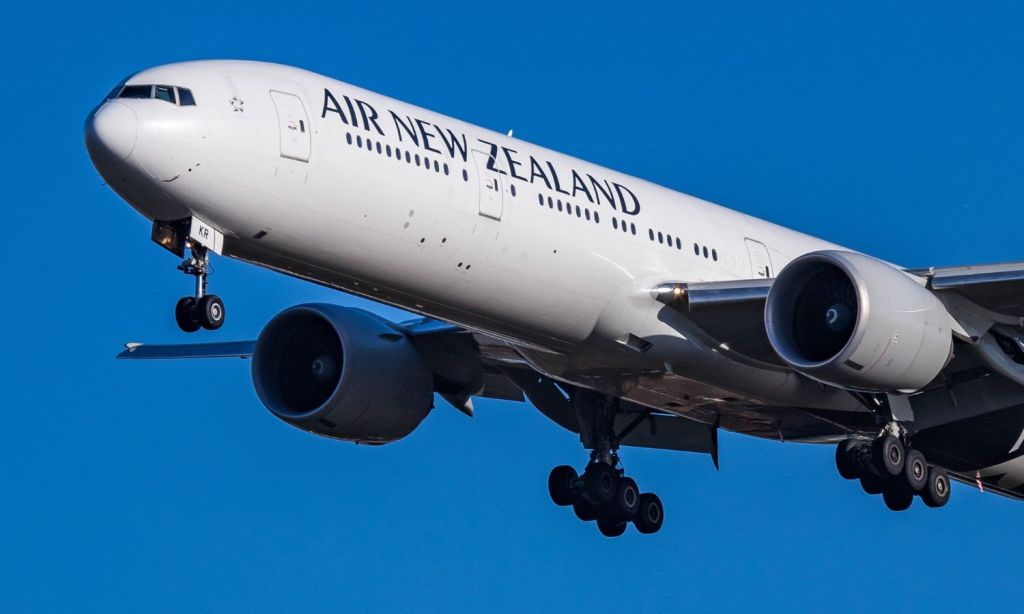Air New Zealand has boldly announced it’s aiming to fly a zero-emissions aircraft by 2026, as part of its wider plans to introduce a greener, more sustainable fleet, and to inspire the rest of the airline industry.
The airline shared this week it would be launching Mission Next Generation Aircraft, an accelerator programme to progress two of its ambitious goals. Firstly, it aims to fly its first zero-emissions aircraft — either cargo or passenger — by 2026. And, secondly, it will begin to replace its Q300 domestic fleet with a more sustainable aircraft — likely green hydrogen or battery hybrid systems — from 2030.
There are two potential energy sources for zero-emission planes – hydrogen and electricity, according to Climateworks Foundation. “Due to the weight of current batteries, electric aircraft will be limited to short-range commuter missions in the near term,” reads a blog post. “Hydrogen-powered aircraft, on the other hand, are promising but not without their own technological challenges.”
Related: Travel Talk: What Is a Sleep-Centric Suite, and Would You Book a Hotel Just for the ZZZs?
Related: More $$$ for Mimosas: This Travel Hack Will Help You Save Up to 20% on Airfares
The airline released a Product Requirements Document (PRD) in December 2021 that had seen more than 30 aircraft developers respond with ideas and insights to guide the technology development. Air NZ says it’s currently in close negotiations with selected partners and expects to sign letters of intent by the end of this year.
“We have bold sustainability goals,” said Air New Zealand Chief Executive Officer Greg Foran in a release.
“Conventional business processes are not going to address the technology or infrastructure required to meet them. We want to lead the rollout of zero-emission aircraft and work alongside aircraft developers, innovators and infrastructure providers to give them the confidence they’re developing a product that’s a viable option for us.”
Foran said the learnings the team will take from flying the zero-emissions aircraft in 2026 will pave the way for the airline’s long-term green hydrogen and hybrid partners to deliver an aircraft that can replace its existing Q300 domestic fleet.
“We’re breaking new ground here – it’s not just the aircraft that needs to be developed, but also the infrastructure and regulation required to fly commercial,” he said. “We know these goals are ambitious, but ambition is exactly what is required to make this new technology a reality.”
Air NZ’s PRD process highlighted how New Zealand — and specifically, the airline — were ideally suited to lead the development of zero-emissions aircraft deployment and the establishment of supporting infrastructure. The airline mainly operates short-range routes up and down the country, and New Zealand is largely built on renewable electricity generation.
While zero-emissions aircraft technology will decarbonise the airlines’ domestic network over the period to 2050, Sustainable Aviation Fuel (SAF) will be important in the near term. SAF is a ‘drop in’ fuel that can power current aircraft, reducing emissions for long-haul travel and domestic flights with the planes used for the time being.
In Australia, Qantas said in March this year, it planned to achieve net zero emissions (meaning offsetting its CO2 emissions) by 2050, with an interim target to reduce carbon emissions by 25% by 2030. Virgin Australia also committed to a net zero goal by 2050, in November last year.
“We’ve all got an obligation to do the very best job we can at protecting the environment and protecting our futures,” said Virgin Australia CEO Jayne Hrdlicka at the time. “I really don’t think we have a choice but to commit to net zero emissions by 2050. We’re passionate about this, we absolutely intend to be successful at it.”
Read more stories from The Latch and subscribe to our email newsletter.







